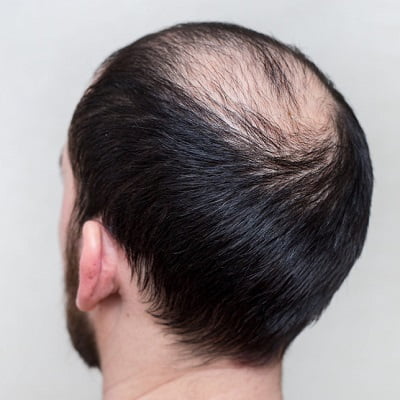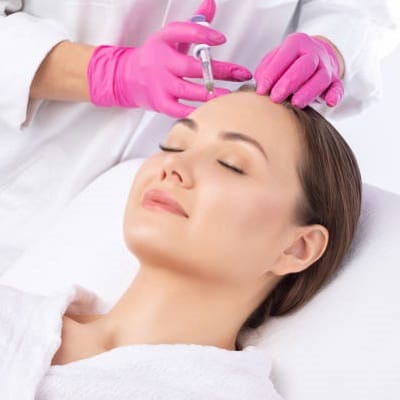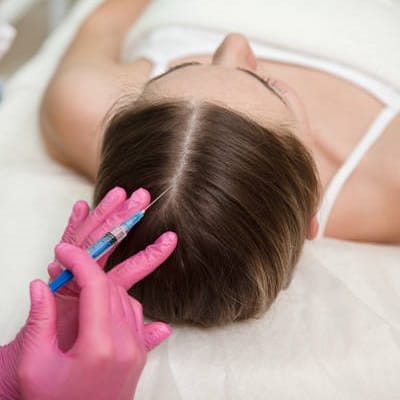
Alopecia is a medical condition that causes hair follicles to shrink which eventually results in pattern baldness. Doctors suggest using Platelet-rich-plasma to control hair loss. It accelerates healing and promotes the growth of healthy hair follicles.
Blood has three main components white blood cells, red blood cells, and platelets. In PRP, a patient’s blood is taken and placed in a centrifuge to isolate these components from one another. The treatment has become a popular way for restoring hair growth without using Hair Transplant. PRP is injected at different locations in the scalp where it increases the blood supply to the follicles and in turn, makes them thick. You can get increased hair growth without pain. PRP reverses hair loss and stimulates new hair growth. PRP shots are better than over the counter hair restoration products.
How long do the results of PRP therapy last?
The results of PRP treatment are effective and wonderfully satisfying but they require maintenance. You are recommended to take 4-8 sessions six months apart if you wish to see fuller results. PRP has made it possible to get a thicker and fuller head of hair in just a few months. We have hundreds of patients who are happy with the results because their hair density has significantly improved after it. Keep this in mind PRP is not recommended to you if you are completely bald.
The treatment is safe and has few side-effects. You will experience some pain, bruising, pain, or discomfort in the injection site but it will disappear in 3-4 days. Some people say that the shots hurt even with numbing medicine.
Researchers have found that PRP came to be very effective for people with androgenetic alopecia. Because of PRP, their hair loss has remarkably reduced and hair thickness has increased significantly.
Are you a candidate?
Both men and women in the early stages of hair loss can consider this treatment. You get the best results if you have bald patches on your head or have thin hairs in some areas of the scalp. PRP shots restore the hair growth and thicken the thin hair.
How alopecia is treated by PRP?
Doctors consider PRP as the best solution to treat different types of alopecia including alopecia areata, alopecia Universalis, alopecia totalis, etc. Researches assessed the safety and feasibility of PRP injections and the outcomes came out to be very effective. The hair pull test was done prior to every PRP therapy session. A specified amount of PRP was injected in the affected areas of the scalp by utilizing an insulin syringe. The same process was repeated every two weeks, for a total of four times. The outcomes were assessed and hair loss was controlled up to 70% In PRP therapy, the doctor performs three main steps.
- A small amount of patient’s blood is extracted from the vein in the arm
- Drawn blood is placed in the centrifuge and spun to separate blood components
- Platelet-rich-plasma shots are infused in alopecia affected areas of the scalp
- It reduces hair growth and improves overall hair density
What do you need to do before and after the procedure?
An initial consultation with the dermatologist is required to determine the cause of your hair loss. The procedure of PRP is simple and short therefore no special and demanding care you need to do before and after it. Effectiveness of the results could be improved if you follow these tips,
- Avoid prolonged sun exposure for 2 to 3 weeks before and after the treatment
- Discontinue taking blood-thinning medications during the last 36 to 48 hours prior to the treatment
- Strenuous exercises should be avoided for the next 48 hours after getting the procedure
- Do not wash your scalp for 24 to 48 hours post-procedure
How many sessions are required?
You will notice an improvement in hair loss after attending the first session. In most cases, 6 sessions are enough to get the desired results. It is important to note that the outturns are not permanent, they usually last for up to 2-3 years.
Book a free appointment
Visit Dynamic clinic if you want to treat alopecia by PRP therapy in Islamabad, Rawalpindi, and Pakistan. Schedule your appointment with our expert now by filling in the consultation form or calling us on our phone number.



